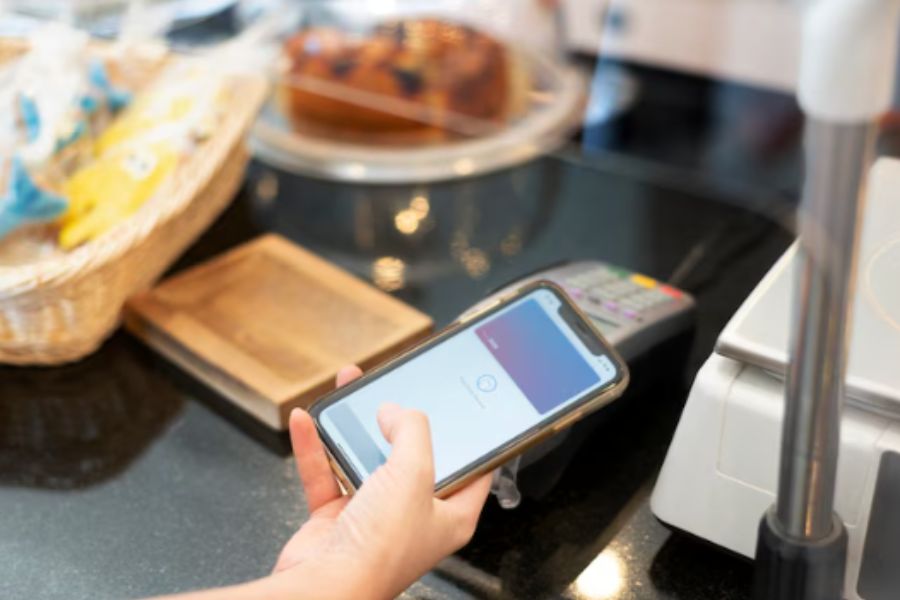In today’s rapidly evolving retail landscape, the concept of shopping has transcended traditional boundaries. The advent of next gen Point of Sale (POS) systems has revolutionized the way consumers interact with brands. This article delves into the transformative power of how next-gen POS redefines retail, exploring how they redefine retail by creating seamless shopping experiences that bridge the gap between physical and digital realms.
Important Characteristics Of The Next-Gen POS System For The Retail Sector
Improved Omnichannel Capabilities
Omnichannel capabilities are pivotal for modern retailers aiming to create a cohesive shopping experience for customers across various touchpoints. Next-gen POS systems seamlessly integrate online and offline channels, ensuring that customers can interact with the brand through their preferred mediums.
This integration allows for consistent product information, pricing, and promotions across platforms, enabling customers to seamlessly switch between browsing online and making purchases in-store, or vice versa. The system also enables features like “buy online, pick up in-store” (BOPIS) or “ship from store,” enhancing convenience and customer satisfaction. As per Research And Markets, the worldwide market for Buy Online Pick Up In Store (BOPIS) is projected to attain a value of approximately $703.18 billion by 2027. This growth will be driven by a robust compound annual growth rate (CAGR) of 19.3% between the years 2021 and 2027.
Increased Mobility and Flexibility
The shift toward mobile and flexible POS solutions has revolutionized the retail landscape. With mobile devices like tablets and smartphones, store associates can assist customers anywhere on the shop floor. This mobility eliminates long checkout lines and creates a more personalized shopping experience. Furthermore, the flexibility to process transactions, check inventory, and access customer data from anywhere within the store enhances customer engagement and boosts sales.
Advanced Analytics and Actionable Insights
Advanced analytics tools within next-gen POS systems gather and analyze data on sales, inventory, customer behavior, and more. These insights provide retailers with a deep understanding of their business performance and customer preferences. Retailers can then tailor their strategies, such as inventory management, pricing, and marketing campaigns, to align with customer needs and market trends.
Scalability and Seamless Integration
The retail landscape is dynamic, and businesses need POS systems that can grow with them. Next-gen POS solutions are designed to be scalable, accommodating the expansion of single stores into multi-location enterprises. Additionally, seamless integration with other business tools like inventory management systems, e-commerce platforms, and accounting software ensures consistent data flow and reduces the risk of errors from manual data entry.
By combining these essential characteristics, next gen POS systems empower retailers to provide exceptional shopping experiences, streamline operations, and stay competitive in a rapidly evolving industry.
The Advantages For Businesses In The Retail Sector Offered By The Next Gen POS
The advent of next-generation Point of Sale (POS) systems has redefined the retail industry. These advanced systems offer a range of advantages that extend beyond transaction processing. From enhancing customer experiences and operational efficiency to fostering flexibility and competitiveness, the impact of these next-gen POS systems is profound.
Elevated Customer Experience
Next gen POS systems significantly enhance the overall customer experience, leading to increased customer satisfaction and loyalty. Two key aspects contributing to this are:
- Clienteling: Clienteling is a personalized customer service strategy that leverages data to build stronger customer relationships. Next-gen POS systems allow store associates to access customer profiles, purchase histories, and preferences. Armed with this information, associates can offer tailored recommendations and provide a more personalized shopping experience. For instance, if a customer enters the store, the associate can offer products that align with their past purchases or preferences, making the customer feel valued and understood.
- Remote Selling: Next-gen POS systems facilitate remote selling by enabling associates to assist customers from anywhere. This is especially useful during situations like lockdowns or when customers prefer to shop from the comfort of their homes. Store associates can connect with customers through video calls or chat, showcase products, answer questions, and even process transactions remotely. This extends the shopping experience beyond physical stores and fosters customer engagement.
Augmented Operational Efficiency
The advanced capabilities of next-gen POS systems streamline various operational processes, leading to increased efficiency and reduced manual effort.
- Inventory Management: Real-time inventory tracking is made possible through these systems, ensuring businesses can accurately manage stock levels. Automated inventory updates help prevent stockouts and overstock situations, leading to better supply chain management.
- Checkout Process: Next-gen POS systems expedite the checkout process, whether in-store or online. Features like mobile payments and scan-and-go technology reduce waiting times, enhancing customer satisfaction and increasing the number of transactions that can be processed.
- Employee Productivity: With easy access to customer data, product information, and inventory availability, store associates can assist customers more efficiently. This optimizes their time and allows them to focus on providing value-added services.

Agility and Flexibility
Next gen POS systems offer agility and flexibility, allowing retailers to adapt to changing market demands and consumer preferences.
- Self-Checkout: Many next gen POS systems include self-checkout options. This empowers customers to complete their transactions independently, minimizing waiting times and enhancing the shopping experience. Self-checkout also reduces the need for additional checkout staff during peak hours.
- Mobile POS: Mobile POS devices enable associates to assist customers anywhere in the store, rather than being tied to a fixed counter. This flexibility improves customer engagement and reduces congestion at checkout counters.
Competitive Edge
Adopting next-gen POS systems provides a competitive edge in a crowded retail landscape.
- Innovative Shopping Experience: Offering features like personalized recommendations, remote selling, and seamless omnichannel experiences set retailers apart and attract tech-savvy customers.
- Data-Driven Strategies: The insights generated by advanced analytics in next-gen POS systems enable retailers to make informed decisions. This leads to more effective inventory management, pricing strategies, and targeted marketing campaigns.
- Adaptability: As consumer behavior and technology evolve, businesses that embrace the latest POS technology can quickly adapt to changes and stay relevant.
Overall, the advantages of next gen POS systems for businesses in the retail sector are multifaceted. They encompass improved customer experience through clienteling and remote selling, augmented operational efficiency, flexibility through self-checkout and mobile POS, and a competitive edge driven by innovative features and data-driven decision-making. These advantages collectively enable retailers to provide exceptional service, optimize operations, and stand out in a competitive market.
Traditional vs. Next Gen POS: A Comprehensive Comparison For Retail Success
Traditional POS systems, once the cornerstone of retail operations, now stands in stark contrast to the capabilities of their next-generation counterparts. This comprehensive comparison examines the fundamental differences between the two, and how these differences contribute to the success of retailers in the digital age.
Contrasting Single-Tenant and Multi-Tenant Approaches
Traditional POS systems often employ a single-tenant architecture, where each store or location has its standalone system. In contrast, next gen POS systems embrace a multi-tenant approach, enabling centralized management of multiple locations from a single interface. This streamlines updates, enhances consistency, and simplifies administrative tasks, thus paving the way for more efficient operations across the retail chain.
Distinguishing Batch Updates from Versionless System
Traditionally, POS updates were cumbersome and required batch installations, resulting in downtime and potential disruptions. Next-gen systems, however, offer a versionless approach with continuous updates that seamlessly integrate new features and enhancements. This ensures that retailers always have access to the latest tools without disrupting daily operations.
Comparing Fixed Registers and Mobile-First Design
Fixed registers were a hallmark of traditional POS systems, tying store associates to specific counters. Next-gen systems champion mobility, leveraging mobile devices such as tablets and smartphones to enable associates to engage customers directly on the shop floor. This flexibility not only reduces wait times but also enhances customer interactions and satisfaction.
Weighing Transaction-Centric against Customer-Centric Systems:
Traditional POS systems were primarily transaction-centric, focusing on completing sales efficiently. In contrast, next-gen systems adopt a customer-centric approach, leveraging customer data to personalize interactions, provide tailored recommendations, and build lasting relationships. This transformation from mere transactions to personalized experiences fosters customer loyalty and retention.
Evaluating Single-Purpose versus Multi-Purpose Solutions
Traditional POS systems often had a single purpose: processing transactions. Next-gen systems, however, are multifunctional powerhouses. They manage inventory, analyze data, provide insights, and facilitate customer engagement. This versatility not only optimizes operations but also empowers retailers with valuable insights for strategic decision-making.
Differentiating Channel-Specific and Channel-Agnostic Approaches
Traditional POS systems typically operate within individual sales channels, leading to disconnected experiences. Next-gen systems adopt a channel-agnostic approach, seamlessly integrating online and offline channels to create an omnichannel experience. This integration ensures consistent pricing, promotions, and inventory information across all touchpoints, enhancing the overall shopping journey.
Synthesizing All Elements
In the synthesis of these elements, next gen POS systems emerge as catalysts for retail success. Their multi-tenant architecture centralizes management, versionless updates ensure continuous improvement, mobile-first design fosters engagement, and customer-centric strategies build loyalty. The ability to serve multiple purposes, provide an omnichannel experience, and adapt to changing market demands cement these POS systems as indispensable tools for thriving in the modern retail landscape. Let’s see this table for the overall comparison.
| Aspect | Traditional POS Systems | Next Gen POS Systems |
| Architecture | Single-Tenant | Multi-Tenant |
| Updates | Batch Installations | Versionless Continuous Updates |
| Device Design | Fixed Registers | Mobile-First (Tablets, Smartphones) |
| Focus | Transaction-Centric | Customer-Centric |
| Functionality | Transaction Processing | Multi-Purpose (Inventory, Data Analysis, Customer Engagement) |
| Channel Integration | Channel-Specific | Channel-Agnostic (Omnichannel) |
Considerations For Implementing Next-Gen POS
The implementation of a next gen POS system holds the potential to elevate your business operations and customer experiences. However, a successful transition requires careful planning and consideration of various factors. Here are key considerations to keep in mind when implementing these POSs:
- Clearly Defining Objectives: Begin by outlining your objectives. Determine if you’re seeking to enhance customer experience, streamline operations, improve data analytics, or achieve a combination of goals. A clear understanding of your objectives will guide your selection and implementation process.
- Evaluating Business Needs: Assess your unique business requirements. Consider factors such as the size of your operation, the nature of your products, and your target audience. Tailor the features of the next gen POS system to align with these needs.
- Scalability and Growth: Choose this POS solution that can scale your business as it grows. Ensure that the system can accommodate increased transaction volumes, additional locations, and changing customer demands.
- Integration Capability: Consider how the advanced system integrates with your existing systems, such as inventory management, e-commerce, and customer relationship management (CRM POS). Seamless integration minimizes data discrepancies and enhances overall efficiency.
- User-Friendly Interface: Opt for a next-gen POS system with an intuitive and user-friendly interface. This reduces training time for employees and ensures smoother adoption of the new system across your organization.
- Mobile Compatibility: Given the prevalence of mobile devices, consider a next gen POS that supports mobile functionality. This could empower your staff to assist customers anywhere on the sales floor, enhancing the overall shopping experience.
- Data Security: Security is paramount in modern business. Ensure that the next gen POS system adheres to industry security standards, encrypts sensitive data, and offers features such as user authentication and authorization.
- Customization Options: Select this POS solution that allows customization to suit your business processes. The ability to configure the system according to your specific needs can greatly enhance its effectiveness.
- Training and Support: Provide comprehensive training to your staff to ensure they are comfortable using the new system. Additionally, opt for a provider that offers reliable customer support to address any issues or questions that arise during and after implementation.
- Vendor Reputation: Choose a reputable vendor with a track record of delivering reliable and innovative solutions. Read reviews, seek recommendations, and assess their level of customer support.
The successful implementation of a next gen POS system involves a strategic approach that aligns with your business needs and goals. By considering these crucial factors, you can ensure a seamless transition that enhances your operational efficiency and customer satisfaction.
What ConnectPOS Next Gen POS Offers
ConnectPOS next gen POS (Point of Sale) offers a revolutionary solution that empowers businesses with cutting-edge technology to enhance their retail operations and customer experiences. This advanced POS system introduces a range of features and capabilities designed to streamline operations, boost sales, and provide unparalleled convenience for both merchants and shoppers.
- Omnichannel Integration: ConnectPOS seamlessly integrates with various sales channels, including physical stores, e-commerce platforms, and marketplaces. This enables retailers to manage inventory, orders, and customer data across all channels in real-time, ensuring a consistent and cohesive shopping experience.
- AI-Powered Analytics: Leveraging the power of artificial intelligence, this modern POS system offers insightful analytics that helps businesses make data-driven decisions. Merchants can gain valuable insights into sales trends, customer preferences, and inventory performance, enabling them to optimize their product offerings and marketing strategies.
- Personalized Customer Interactions: The POS system utilizes customer data and purchase history to provide personalized recommendations and offers. This personalized approach enhances customer engagement and loyalty, leading to increased repeat business and higher customer satisfaction.
- Mobile Flexibility: ConnectPOS’s next gen POS is designed with mobility in mind. It allows sales associates to assist customers anywhere in the store using mobile devices, facilitating quicker checkouts and reducing waiting times.
- Advanced Inventory Management: With features like real-time inventory tracking, automatic restocking notifications, and multi-location support, businesses can efficiently manage their inventory and prevent stockouts, ultimately minimizing revenue loss.
- Contactless Payments: The POS system supports a wide range of contactless payment methods, including NFC (Near Field Communications), mobile wallets, and QR codes. This ensures that businesses can cater to the increasing demand for convenient and secure payment options.
- Employee Management Tools: The POS system offers tools for employee management, such as role-based permissions, time tracking, and performance monitoring. This ensures efficient staff management and optimal customer service.
- Customizability and Scalability: The POS system is highly customizable to fit the specific needs of different businesses, from small boutiques to large retail chains. Moreover, it is designed to scale as the business grows, accommodating additional locations and increasing transaction volumes.
- Integration with E-commerce: ConnectPOS’s next gen POS can be seamlessly integrated with e-commerce platforms, enabling businesses to synchronize online and offline sales data. This integration simplifies inventory management and provides a holistic view of the business’s performance.
- Enhanced Security: Security features like data encryption, secure payment processing, and user authentication mechanisms ensure that sensitive customer and business information remains protected from potential threats.
ConnectPOS next gen POS brings together the best of modern technology and retail expertise to provide businesses with a comprehensive solution that optimizes their operations, enriches customer interactions, and drives growth in today’s competitive retail landscape.
Conclusion
As consumer preferences continue to evolve, the role of next-gen POS systems in reshaping retail experiences becomes increasingly evident. By redefining retail through seamless shopping experiences, next-gen POS systems are propelling the industry towards a future where the boundaries between online and offline shopping are harmoniously dissolved. If you want to consult more about this information, please don’t hesitate to reach out to us.



